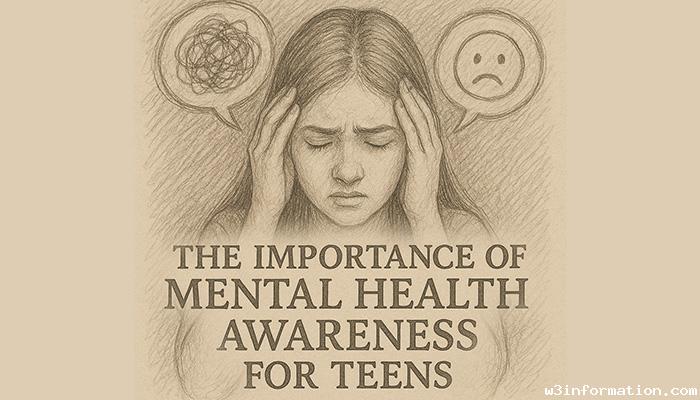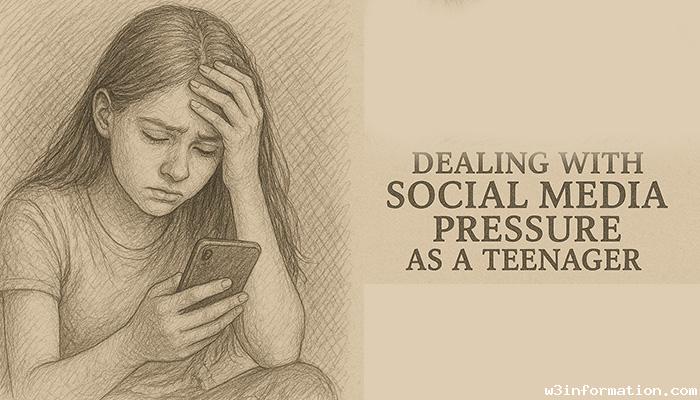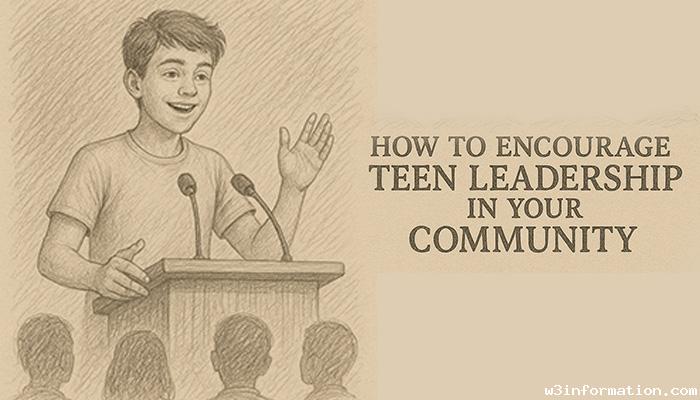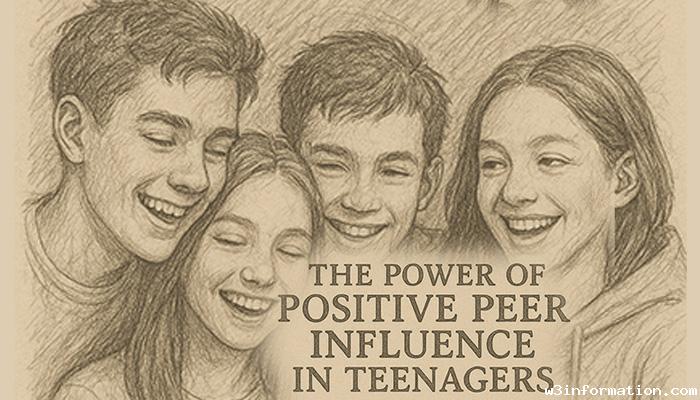The Importance of Mental Health Awareness for Teens
More people today recognize mental health awareness as vital with teenagers representing a key demographic in this evolution. Adolescence presents a pivotal growth stage where teens experience rapid transformations across their physical bodies and emotional lives and social relationships. Teenagers during this period struggle with specific difficulties including school-related stress, peer relationships, self-identity development and emerging mental health disorders. Even though mental health awareness is growing teenagers still face societal taboos that force them to endure their struggles without speaking up. Supporting teenagers through mental health awareness creates environments that reduce stigma while promoting early support and intervention. The article examines the importance of mental health awareness among teenagers and discusses the obstacles they face as well as methods to spread awareness while outlining how schools, families and communities can support teen mental health.
Understanding Teen Mental Health
Developmental Challenges During Adolescence
Adolescence is a time of transformation. Hormonal developments during teenage years directly affect both mood and behavioral patterns. Teens experience substantial cognitive growth which enables them to process abstract concepts and strengthens their personal identity. During this phase teens face increased susceptibility to emotional distress from multiple sources.
- During their identity exploration phase teens face confusion and stress as they search for self-understanding.
- Peer acceptance and relationships matter greatly during adolescence yet they can create anxiety and feelings of isolation.
- The demands to perform academically and plan for future decisions generate intense stress levels.
- The stability of family relationships directly influences mental health because changes or instability within the family can impact mental well-being.

Common Mental Health Issues Among Teens
Developmental Challenges During Adolescence
Adolescence is a time of transformation. Hormonal developments during teenage years directly affect both mood and behavioral patterns. Teens experience substantial cognitive growth which enables them to process abstract concepts and strengthens their personal identity. During this phase teens face increased susceptibility to emotional distress from multiple sources.
- During their identity exploration phase teens face confusion and stress as they search for self-understanding.
- Peer acceptance and relationships matter greatly during adolescence yet they can create anxiety and feelings of isolation.
- The demands to perform academically and plan for future decisions generate intense stress levels.
- The stability of family relationships directly influences mental health because changes or instability within the family can impact mental well-being.
Common Mental Health Issues Among Teens
The onset of mental health disorders typically occurs during the teenage years. Teens commonly face several major mental health challenges which include:
- Depression manifests as enduring sadness along with diminished interest in activities and social withdrawal.
- The symptoms of anxiety disorders which include constant worry alongside panic attacks and fear create obstacles in daily life functioning.
- Anorexia and bulimia are eating disorders that represent harmful relationships between individuals and their food and body image.
- Attention-deficit/hyperactivity disorder (ADHD) creates challenges in maintaining sustained attention and impulse control.
- Some teenagers use drugs or alcohol to manage their emotional pain.
- Suicidal behavior and self-harm represent urgent dangers for adolescents that demand prompt intervention.
It is fundamental to identify these issues to enable prompt support and treatment.
The importance of mental health awareness education focuses on teenagers to help them understand and address their mental health needs.
Breaking the Stigma Surrounding Mental Health
The stigma associated with mental health issues remains one of the major obstacles to people seeking assistance. Youth frequently experience anxiety about receiving unfair judgment while being misunderstood or perceived as "weak." The stigma associated with mental health problems stops teens from having open discussions while making them hesitant to seek support. Awareness campaigns regarding mental health transform these discussions into normalized topics.
- People should recognize mental health problems carry the same level of reality and seriousness as physical health conditions.
- Mental health awareness campaigns motivate peers, parents, and educators to show empathy and understanding towards each other.
- The campaign showcases teen experiences who found help and overcame mental health challenges.
Encouraging Early Identification and Intervention
Encouraging Early Identification and Intervention
Recognition of mental health problems in their early stages leads to far better results. With timely detection and treatment mental health conditions become manageable which helps adolescents lead lives that are both healthy and rewarding. Awareness programs about mental health enable teens, parents, and teachers to detect warning signals in behavior patterns including:
- Sudden changes in behavior or mood.
- Declining academic performance.
- Withdrawal from friends and family.
- Expressions of hopelessness or despair.
An early recognition of these warning signs enables support systems to take action promptly which diminishes the likelihood of severe issues arising.
Providing Teens with Coping Skills and Support
Teenagers gain valuable resources to handle stress and emotional difficulties through mental health education. Awareness efforts often include:
- The program teaches teenagers how to manage stress through mindfulness exercises, physical activity, and relaxation methods.
- Supporting mental health through healthy lifestyle decisions requires attention to proper sleep routines and balanced dietary habits.
- We support help-seeking practices among teens and provide information about available counseling services and helpline resources.
These skills give teens the power to manage their challenges while creating life-long resilience.
Several difficulties exist in raising awareness about mental health issues among adolescent populations
Cultural and Social Barriers
Social norms and cultural beliefs shape how people perceive mental health. Awareness campaigns face obstacles in certain communities where mental illness remains misunderstood or stigmatized. Teens might avoid discussing their problems because they fear discrimination or losing their social status.
Lack of Adequate Resources
Schools and communities face shortages in mental health resources which include trained counselors along with psychologists and accessible treatment options. The absence of enough mental health resources leads to long waiting times and unmet needs for teenagers who require help.
Digital Age Complications
Technology provides opportunities to increase awareness but simultaneously creates various obstacles. Social media platforms have been linked to increased incidences of anxiety and depression as well as incidents of bullying. Misinformation about mental health spreads easily on online platforms with potential harmful consequences. The ability to use digital platforms responsibly stands as an essential part of mental health educational programs.
Approaches to Promote Mental Health Understanding Among Teens
Integrating Mental Health Education in Schools
Schools have a significant influence on teenagers while serving as perfect environments to teach mental health education. Introducing comprehensive mental health curricula helps:
- Normalize conversations about emotions and mental well-being.
- Teach students about common mental health conditions.
- Teach practical methods for individual self-care and mutual support between peers.
- Educate teachers to identify and address mental health problems appropriately.
Creating Supportive Environments at Home
Guardians and parents must establish transparent dialogues about mental health within their homes. This involves:
- Support teens by allowing them to share their emotions without criticism.
- Being attentive to behavioral changes.
- Seeking professional help when needed.
- Parents and guardians must learn mental health knowledge to enhance their ability to support their children.
Utilizing Peer Support Systems
Adolescents generally prefer talking about their problems with their friends. Creating peer mentoring or support groups in schools and communities enables:
- Reduce feelings of isolation.
- Provide safe spaces for sharing experiences.
- Promote empathy and solidarity.
- Help identify those needing professional help.
Leveraging Technology and Media Positively
Digital technologies serve as effective instruments in spreading mental health awareness. Strategies include:
- Creating applications that offer mental health resources along with coping strategies helps users manage their mental well-being.
- Social media campaigns serve as platforms to distribute awareness information while minimizing social stigma.
- We deliver online counseling and confidential support group sessions which provide easy access for users.
The Role of Communities and Policy Makers
Enhancing Access to Mental Health Services
Governments and community organizations should allocate resources and develop mental health services specifically for teenage populations. This includes:
- Schools and community clinics require more mental health professionals to expand service capacity.
- Providing affordable or free counseling and treatment.
- Developing crisis intervention programs along with suicide prevention hotlines needs to be prioritized.
Promoting Inclusive and Youth-Centered Policies
The development of policies needs to focus primarily on the requirements of teenagers. When young people take part in mental health programs their relevance and success rates improve. The support system needs to incorporate marginalized groups like LGBTQ+ teens and teens with disabilities to ensure equity.
Public Awareness Campaigns
The government and non-profit organizations should fund initiatives that work toward destigmatizing mental health while educating the general population. Public awareness campaigns need to respect cultural differences while delivering relatable messages that reach a broad audience.
Conclusion
Understanding mental health matters represents an essential element for the well-being of teenagers. Intervening with mental health problems during adolescence can help avoid lifetime issues while enabling adults to live healthier and more joyful lives. The development of supportive environments for young people depends on reducing stigma and providing early intervention while giving teens the necessary tools and support to succeed. Schools working together with families and communities and policymakers must collaborate to establish a society where mental health understanding for teenagers is a top priority. The future benefits from this awareness because young people's mental health conditions will determine their descendants' well-being.
 How to Prepare for College: A Teenager’s Guide
How to Prepare for College: A Teenager’s Guide
 Dealing with Social Media Pressure as a Teenager
Dealing with Social Media Pressure as a Teenager
 How to Encourage Teen Leadership in Your Community
How to Encourage Teen Leadership in Your Community
 The Power of Positive Peer Influence in Teenagers
The Power of Positive Peer Influence in Teenagers
 The Role of Grandparents in a Child’s Development
The Role of Grandparents in a Child’s Development